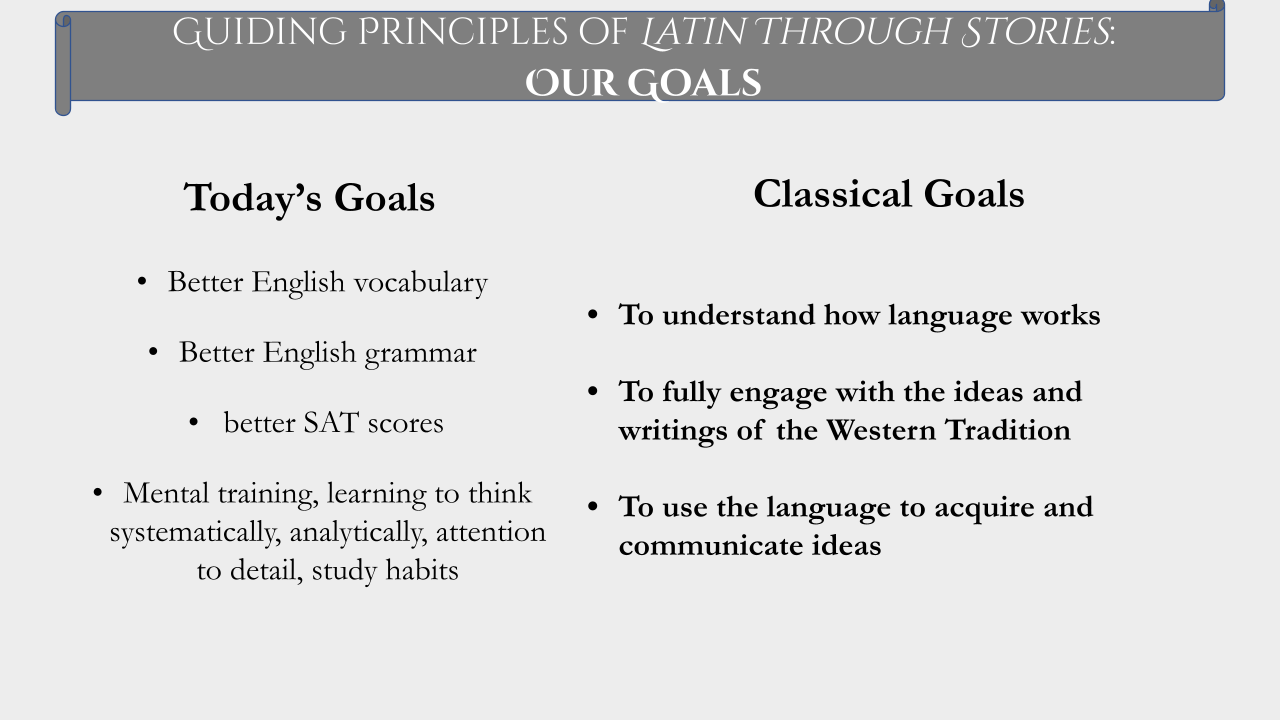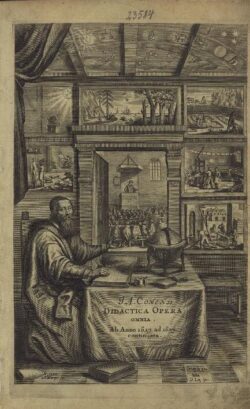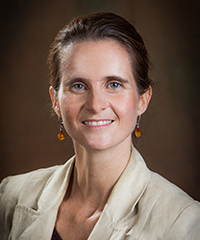Why Latin?
by Dr. Laura Eidt
One of the most surprising things about Classical Education today is the widespread utilitarian approach to teaching Latin. Although classical educators generally emphasize intangibles like Truth, Goodness, and Beauty and regard wisdom and virtue as the proper ends of education, website after website and curriculum after curriculum tries to explain why Latin is useful.
The most common reasons listed for studying Latin are that it improves students’ vocabulary, their understanding of English grammar, their logical reasoning, that it prepares them for career fields such as law, medicine, and science, that it helps with learning other languages, and that it improves cognitive abilities and study skills in general, fostering attention to detail and analytical skills.
While these reasons are all mostly true, they are at best welcome side-effects, not intrinsic reasons for studying Latin. Moreover, students can achieve all of them without studying Latin. Learning a musical instrument also fosters study skills and attention to detail, and if you want to go for the brain boost, logic, and analytical skills, try Finnish—it has 15 noun cases and 51 declension groups and far fewer exceptions than Latin. And many people have excellent knowledge of English grammar and a wide vocabulary without having studied Latin.

Principia Mathematica by Sir Isaac Newton
Furthermore, such utilitarian goals are decidedly not classical and likely wouldn’t have occurred to anyone before the 18th century. Historically, the main reason for learning Latin was to read, write, and communicate in that language. Students were, of course, also expected to know its grammar really well, but knowing grammar wasn’t the main goal for learning Latin. Up until at least the 18th century, people learned Latin so they could read and communicate important ideas. When little Isaac Newton went to school in the mid-1600s, we can assume that his teacher’s goal was for students to be able to produce the language, and Newton clearly had plenty of practice in Latin composition before writing his three volume Principia Mathematica in Latin, well over a thousand years after the fall of Rome.
In 1816, Thomas Cooper, professor of chemistry at Carlisle College in Pennsylvania and friend of Thomas Jefferson, advised him about the future University of Virginia: “[N]o youth can be admitted to the university unless he can read with facility Virgil, Horace, Xenophon, and Homer: unless he is able to convert a page of English at sight into Latin […] No week should pass without at least three pages of composition in Latin prose, and one in verse, upon given subjects.” (Thomas Jefferson and the University of Virginia, p. 75). Clearly, even in the early 1800s, students were still expected to read and write Latin fluently. And when Joseph Ratzinger, later Pope Benedict, was held as a prisoner of war by the American forces, he took a little notebook with him so he could compose Greek hexameters to pass the time.
So, we need to ask ourselves: is our goal for learning Latin to improve students’ English grammar and vocabulary or is our goal that students will actually learn Latin? The classical goal was for students to be able to take part in the ongoing Great Conversation in that Latin by being able to read, understand, and communicate ideas with fluency and accuracy. For many centuries, that goal was achieved by going through the entire Trivium—grammar, logic, and rhetoric—in Latin.

Now, granted, probably up until the early 1900s, a lot more time was devoted to the study of Latin than our schools typically are willing to give. For example, in 1867, the 5th and 6th graders of a Latin School in Germany had 10 hours of Latin, 4 of French, and only 3 in their native German. 7th and 8th graders had 9 hours of Latin, 5 of Greek, 4 of French, and 2 of German. A British school in 1768 had a total of 6 hours of language classes (French, Latin and Greek) every day: “The School begins at Seven in which languages are taught ’till Nine. […] From One till Four languages are taught.” Few classical schools in the U.S. today take language learning as seriously, although John Senior’s ideal school (as described in the manuscript The Foundation of Innocence: An Idea for a School) involves at least six hours of Latin a day: “Except for Calisthenics, Math and English Literature, everything is studied ‘Latinly.’ In other words, Latin, Nature Study, History and Music constitute a single subject divided by topics.” But even if that isn’t a realistic idea for most of us, as classical educators we should still be conscious of teaching Latin within the tradition of the Trivium of grammar, logic, and rhetoric, and attempt to include elements from all three into our lessons.

Didactica Opera omnia by John Amos Comenius
We created Latin through Stories because we wanted to give young children a joyful introduction to Latin that exposes them to true, good, and beautiful content. A focus on subjects that young children love to talk and learn about fosters their love of the language. We also wanted to create a program that takes children seriously as persons who are capable of using language to communicate thoughts and ideas, not just snippets of language; we do this by allowing students to hear, and in very short succession speak, complete sentences in Latin and by focusing on ideas and stories from day one, rather than on isolated words. As John Amos Comenius emphasized in his Didactica magna (1633-38), “The study of language, especially in the young, should be joined to that of objects, that our acquaintance with the objective world and with language, that is to say, our knowledge of facts and our power to express them, may progress side by side. For it is men that we are forming and not parrots. From this it follows […] that words should not be learned apart from the object to which they refer.” We also want elementary age students to develop a good feel for Latin by memorizing large chunks of the language. For example, by memorizing and understanding large amounts of meaningful and interesting sentences in which the verb is at the end, or that have an implied rather than explicit subject, or that start with the direct object rather than subject, students internalize such patterns. Thus, they develop an implicit feel for the language that gradually becomes explicit awareness, and, later, through direct instruction in grammar, good understanding and knowledge of how language works. “In true liberal education […] the essential activity of the student is to relate the facts learned into a unified, organic whole, to assimilate them as the body assimilates food or as the rose assimilates food from the soil and increases in size, vitality, and beauty.” (Sister Miriam Joseph, The Trivium, p. 7)
Later levels of this curriculum will focus on fables, myths, and Roman heroes. Our goal for these later levels is for students to comprehend the language directly rather than through translation, and to develop the ability to tell back the stories and to converse about them in Latin. These levels will also emphasize more explicit knowledge of grammar through meaningful drills and sentence diagramming. Teaching Latin within the Liberal Arts tradition is not either “grammar method” or “reading method.” Students throughout the history of the Liberal Arts tradition were educated to analyze and parse, as well as speak, read, and write. But as Dr. Charles G. Kim, Jr. reminds us, “the speaking of the language allows one to go back through the history of reflection on religion, government, politics, natural science, philosophy, and any other science worth knowing first-hand, without the interference of translation.” When students learn to use a language actively, they start living in that language and get to “travel through space and time” and to “retrace [their] story though a rich, Socratic dialogue through which we can be contemporaries” (Roberto Carfagni) of Caesar, Alcuin, St. Augustine, St. Thomas Aquinas, Erasmus, Newton, and so many others. By thus entering their world instead of trying to bring their world into ours through translation, we gain direct and unmediated access to their works and become full and competent participants in that Great Conversation that has been carried on in the Latin language for over 2,000 years.
For more on our Latin program at Great Hearts Irving and how to help your child from home, including a Latin Pronunciation Guide, visit our Curricular Resources for Parents page.
About Dr. Eidt
 Dr. Laura Eidt is Affiliate Assistant Professor of Modern Languages, Humanities Program Director, and Faculty Advisor for the K-12 Classical Curriculum Project at the University of Dallas. In that last role, Dr. Eidt is currently overseeing the development of Latin through Stories, an all-new, innovative, immersive Latin curriculum designed specifically for elementary-aged children that we are honored to be piloting here at Great Hearts Irving. Dr. Eidt is also a Great Hearts Irving parent and a dear friend and partner of the Lower School.
Dr. Laura Eidt is Affiliate Assistant Professor of Modern Languages, Humanities Program Director, and Faculty Advisor for the K-12 Classical Curriculum Project at the University of Dallas. In that last role, Dr. Eidt is currently overseeing the development of Latin through Stories, an all-new, innovative, immersive Latin curriculum designed specifically for elementary-aged children that we are honored to be piloting here at Great Hearts Irving. Dr. Eidt is also a Great Hearts Irving parent and a dear friend and partner of the Lower School.
